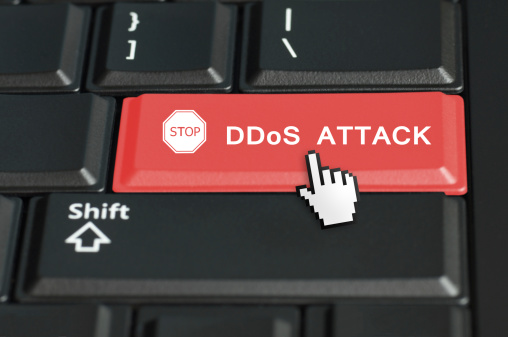
Joining Forces to Advance Protection Against the Growing Diversity of DDoS Attacks
You may have seen the news this morning that we have joined forces with Juniper Networks to provide a comprehensive, always on, DDoS solution. At Verisign, we focus on protecting companies from increasingly complex cyber threats, and this relationship should only raise the bar higher, as it will provide a different, more integrated approach than what’s used today, to help ensure faster and more efficient detection and mitigation.

Jeff Schmidt to Present Name Collision Management Framework at Research Workshop
I’m delighted to announce that the name collisions workshop this weekend will include Jeff Schmidt, CEO of JAS Global Advisors, presenting the Name Collision Occurrence Management Framework that his firm just released for public review.
Jeff’s presentation is one of several on the program announced by the program committee for the Workshop and Prize on Root Causes and Mitigations of Name Collisions (WPNC).

Uncontrolled Interruption? Dozens of “Blocked” Domains in New gTLDs Actually Delegated
The Mitigating the Risk of DNS Namespace Collisions report, just published by JAS Global Advisors, under contract to ICANN, centers on the technique of “controlled interruption,” initially described in a public preview shared by Jeff Schmidt last month.
With that technique, domain names that are currently on one of ICANN’s second-level domain (SLD) block lists can be registered and delegated for regular use, provided that they first go through a trial period where they’re mapped to a designated “test” address. The staged introduction of new SLDs is intended to provide operators of installed systems the opportunity to assess the potential impact of an impending name collision on their own, before any external operators have an opportunity to exploit it.

Keynote Speaker for Name Collisions Workshop: Bruce Schneier
There may still be a few security practitioners working in the field who didn’t have a copy of Bruce Schneier’s Applied Cryptography on their bookshelf the day they started their careers. Bruce’s practical guide to cryptographic algorithms, key management techniques and security protocols, first published in 1993, was a landmark volume for the newly emerging field, and has been a reference to developers ever since.
Beyond just the popularity of the book, Bruce has also been widely recognized over the past two decades for his insightful commentary on the security issues of the day, featured on his monthly Crypto-Gram newsletter, his blog, “Schneier on Security,” 11 more books including the newly published Carry On, as well as numerous essays, op-eds and interviews.
It’s a genuine privilege therefore that Bruce will be keynoting the upcoming Name Collisions Workshop, to be held on March 8-10, in London.

New Work in the Development and Management of EPP Extensions
On Dec. 12, 2013, the Internet Engineering Steering Group (IESG) announced the formation of a new working group, Extensible Provisioning Protocol Extensions (eppext). The working group was formed to create an internet Assigned Numbers Authority (IANA) registry of Extensible Provisioning Protocol (EPP) extensions and to review specifications of extensions for inclusion in the registry. EPP is the standard domain name provisioning protocol for generic top-level domain (gTLD) name registries that operate under the auspices of the Internet Corporation for Assigned Names and Numbers (ICANN). It is also used by a number of country code top-level domain (ccTLD) registries.
The “E” in EPP has been both a blessing and a curse. EPP uses features of the Extensible Markup Language (XML) that provide “hooks” for protocol extensions. These hooks make it easy to specify new functionality without having to modify EPP itself. That’s the blessing. The curse has been that easy extensibility has led to multiple independent specifications that describe similar functionality. In a 2010 presentation, Patrick Mevzek (developer of the Net::DRI Perl library that implements EPP) described XML namespaces used in 68 distinct extensions. He further described three different extensions created by different registry operators to provide domain “undelete” functionality. This duplicity of effort makes implementation much more complicated for anyone developing EPP clients.
Some background information will help explain how we got here.

Colloquium on Collisions: Expert Panelists to Select Papers, Award $50K First Prize
According to the Online Etymology Dictionary, the verb collide is derived from the Latin verb collidere, which means, literally, “to strike together”: com- “together” + lædere “to strike, injure by striking.”
Combined instead with loquium, or “speaking,” the com- prefix produces the Latin-derived noun colloquy: “a speaking together.”
Researchers and practitioners know well the benefits of the colloquium, the technical conference, a gathering of those speaking together on a topic.
So consider WPNC 14 – the upcoming namecollisions.net workshop – a colloquium on collisions: speaking together to keep name spaces from striking together.

Insights on the Technology in the Real World
At each of our Verisign Labs’ Distinguished Speaker Series events I learn something new that stays with me and helps shape my thinking about technology and its impact on the world. The most recent brought the benefit of three insights, as the expanded event, Advancing Internet Technologies in the Developing World, featured a keynote speaker as well as two recipients of Verisign’s Infrastructure Grants.

Collisions Ahead: Look Both Ways before Crossing
Many years ago on my first trip to London, I encountered for the first time signs that warned pedestrians that vehicles might be approaching in a different direction than they were accustomed to in their home countries, given the left-versus-right-side driving patterns around the world. (I wrote a while back about one notable change from left-to-right, the Swedish “H Day,” as a comment on the IPv6 transition.)
If you’re not sure on which side to expect the vehicles, it’s better to look both ways — and look again — if you want to reduce the risk of a collision.

Interest in Bitcoin Reflected by Domain Registrations
Bitcoin, the crypto-currency that has captured the imaginations of technologists and economists around the world, has received a considerable amount of attention over the past couple of weeks.
Recently we have seen how domain name registrations tend to surge in the immediate aftermath of global phenomena. The rise of Bitcoin also presents an opportunity to track global interest and investment by way of .com and.net domain name registrations.

More Brands Are Turning to .com for International Appeal
One of the greatest strengths of the internet is seen when a customer in one country engages with a brand in another. The internet has enabled companies to grow in influence and reach customers far beyond national boundaries in ways that could not have been foreseen even a decade ago.
One of the few places where national boundaries are still apparent online though is in a brand’s domain name. By using a domain name tied to a country, such as one ending in .uk, .ru, or another country code top-level domain (ccTLD), a brand can signal to the world its country of origin.
This is great for a company that only wants to engage with customers in their home country. However, for a person attempting to access content from abroad, a domain name ending in a ccTLD may be difficult to remember due to its unfamiliar syntax. Companies seeking to connect with a global audience can’t afford to have the address for their digital storefronts be limiting in any way. For this reason, it is usually best to select a domain name extension that people are globally familiar with, like .com and .net.